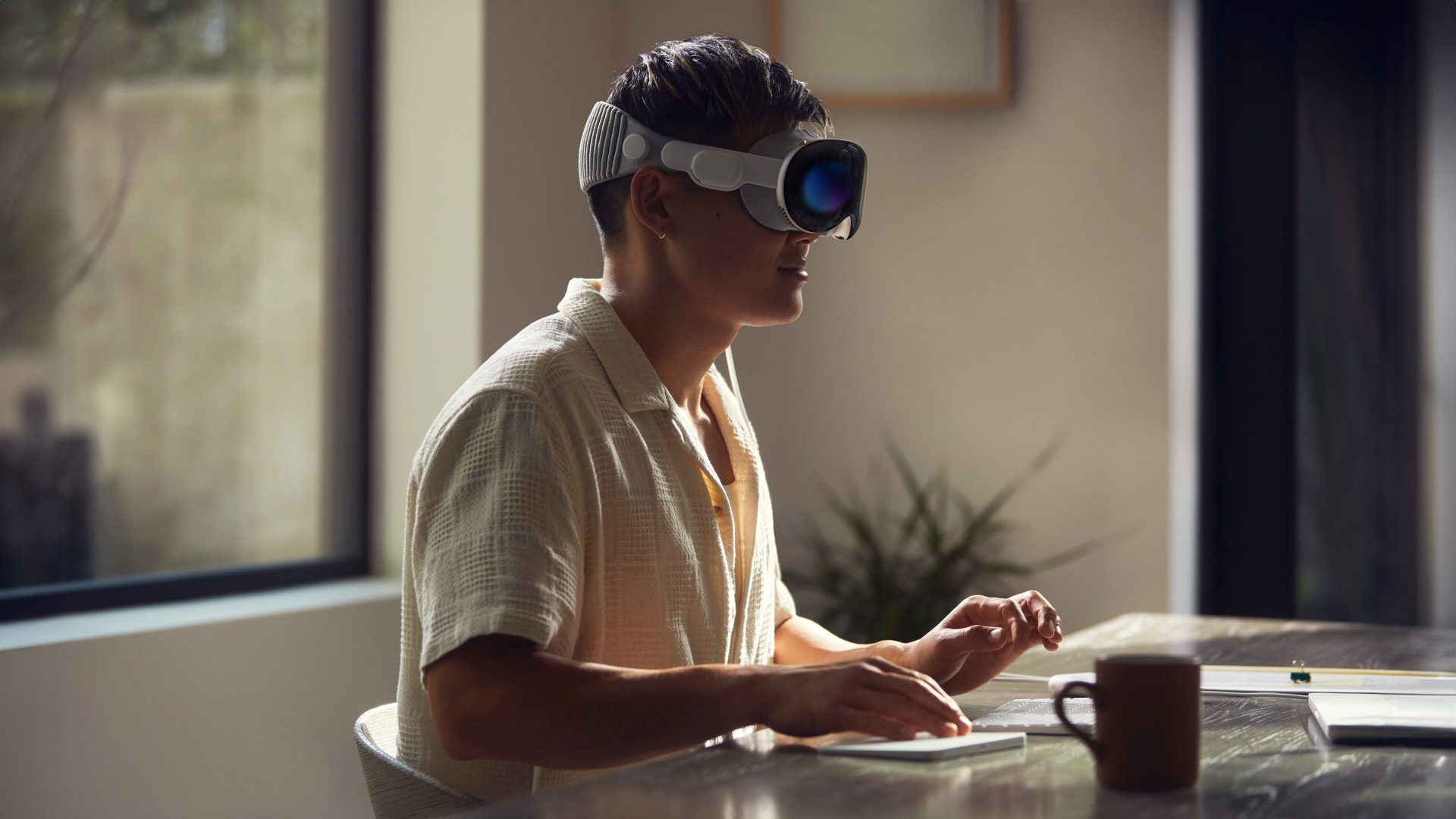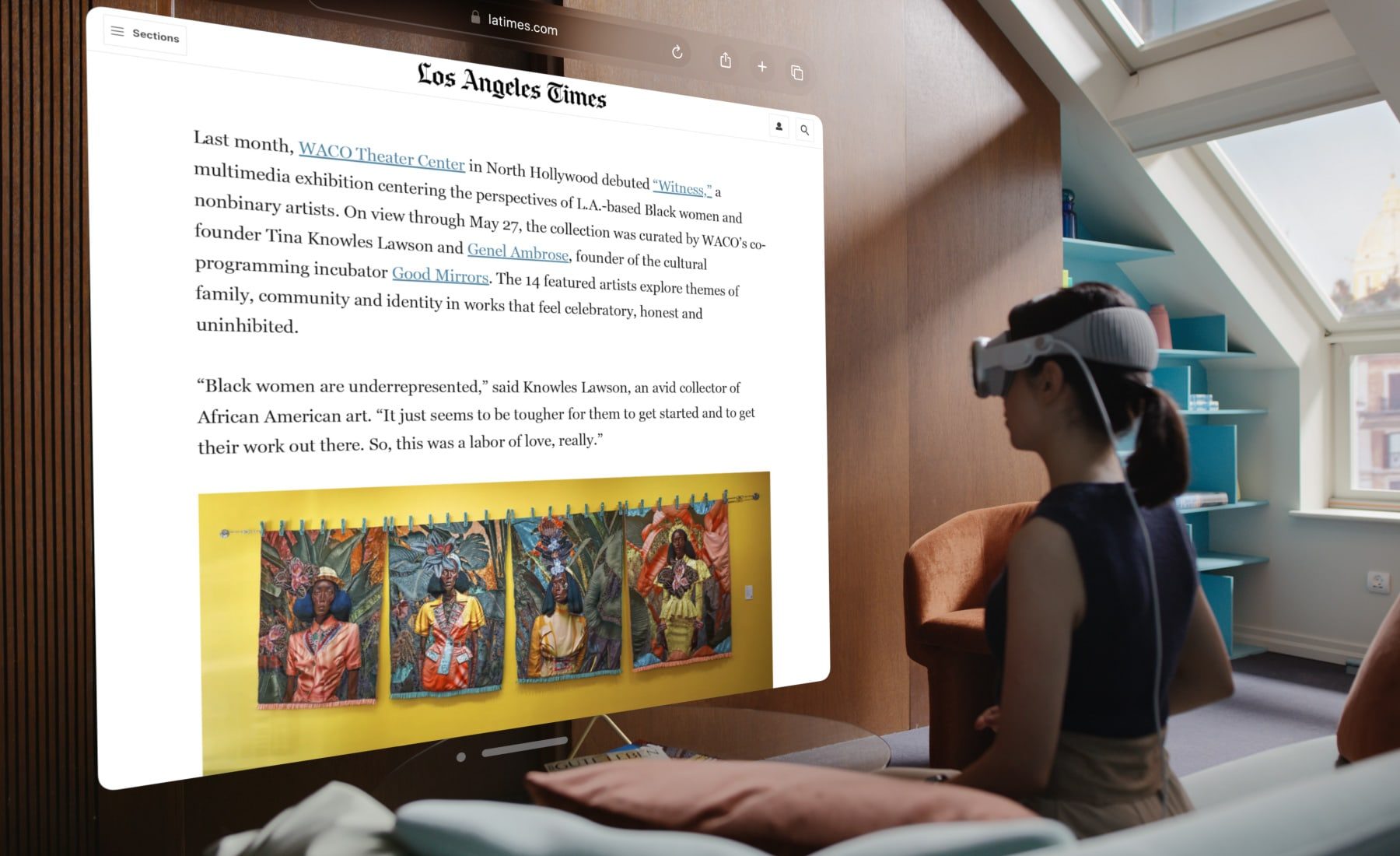Apple Vision Pro is coming next year, not only making for the Fruit Company’s much awaited first XR headset, but also spurring a resurgence in public interest (and likely investment) in the XR space. At $3,500, Vision Pro is undoubtedly an expensive steppingstone to the company’s future augmented reality ambitions, but even if it’s ostensibly ignoring virtual reality in the meantime, it probably won’t forever.
Apple has a tendency to undervalue gaming initially, though perhaps reluctantly, eventually acknowledges its importance. Gaming in XR is considerably enhanced by fully immersive experiences and motion controllers, and Apple will probably start feeling the pressure of that demand from gamers and developers alike when it kicks off a consumer headset sometime down the road, causing them to relent (if only just).
What is Vision Pro?
Like many, Apple is investing in AR today because the headsets and glasses of tomorrow have a good chance of supplanting smartphones and becoming the dominant mobile computing platform of the future. Long considered the holy grail of immersive computing, all-day AR headsets represent a way of interacting with new layers of information in daily life which would span everything from turn-by-turn directions to gaming applications—like Google Maps directions floating on the street in front of your car or a city-wide version of Pokémon Go.
Granted, Vision Pro isn’t yet the sort of device you’ll take out to the park to catch a random Zubat or Rattata—it’s very much an indoor device that Apple envisions you’ll use to sit down and watch a virtual TV screen or stand up in place to have an immersive chat with a work colleague. But as an opening gambit, Apple’s initial pitch of Vision Pro has been fairly telling of its strategy for XR.
In the ‘one more thing’ bit of the WWDC keynote, Apple lauded Vision Pro’s AR capabilities thanks to its color passthrough cameras, impressively responsive UI, and, from our hands-on with the headset, rock-solid hand-tracking. The company focused almost entirely on the work and lifestyle benefits of AR, and much less on the comparatively more closed-off fully immersed capabilities of virtual reality.

Considering just how much time and effort Apple has spent talking about AR, you may be surprised to find out Vision Pro can actually play VR games. After all, like Meta Quest Pro or the upcoming Quest 3, it’s basically a VR headset with passthrough cameras—what we’d call a mixed reality headset. In fact, the headset is already confirmed to support one of VR’s most prominent social VR games.
An important piece is intentionally missing however: Vision Pro doesn’t come with VR controllers and probably has no plans to support them.
Instead, Vision Pro is focusing on eye-tracking and hand-tracking as primary input methods, with support for traditional peripherals like keyboards and mice and gamepads filling in the gaps for work and traditional flatscreen gaming. This means many VR developers looking to target Vision Pro will need to pare down input schemes to refocus on hand-tracking, or create games from the ground-up that don’t rely on the standard triggers, grip buttons, sticks, and half-dozen buttons.
Still, many VR games simply won’t translate without controllers, which above all provide important haptic feedback and a bevy of sticks and buttons for more complex inputs. Not only that, Vision Pro’s room-scale VR gaming chops are hobbled by a guardian limit of 10 feet by 10 feet (3m × 3m)—if the player moves any further, the VR experience will fade away, returning to the headset’s default AR view. There’s no such limit for AR apps, putting VR more or less into a virtual corner.
Denny Unger, CEO of pioneering VR studio Cloudhead Games, nails it on the head in a recent guest article, saying that Vision Pro “appears to be a VR headset pretending not to be a VR headset.”
Apple’s Chronically Late Adoption
Without speculating too far into its XR ambitions, it appears Apple is turning somewhat of a new leaf with Vision Pro. The company is reportedly departing from tradition by creating a dedicated Vision Products Group (VPG), which is tasked with spearheading XR product development. Apple typically distributes its product development efforts across more general departments, such as hardware, software, design, services, etc, instead of sectionalizing hardware development into individual product teams, like Mac, Watch, iPad, iPhone, etc.
Not only that, but the company is also publicly accepting applications for development kits of the headset and hosting a handful of ‘developer labs’ around the world so that developer can get their hands and heads into the device ahead of time. It’s a decidedly different tactic than what we usually see from Apple.
The company’s wider strategy still seems to be in play however. Apple traditionally enters markets where it believes it can make a significant impact and actually own something, making it oftentimes not the first, but in many cases, the most important Big Tech company to validate an emerging market. The paradox here is Apple is actually early to AR, but late to VR. Deemphasizing the now fairly mature VR in favor of potentially creating a stronger foundation for its future AR devices makes a certain amount of sense coming from Apple.
Meanwhile, Apple is reportedly preparing a more consumer-focused follow-up to Vision Pro that will hopefully cost less than a high mileage, but still serviceable 2008 Honda Civic. Whenever Apple pitches that cheaper Vision headset to everyday people, they’ll likely need more entertainment-focused experiences, including fully immersive VR experiences with VR controllers.

And while Apple still isn’t positioning Vision Pro as a fully-fledged VR headset, that doesn’t mean it won’t relent in the future like it does with many crowd-pleasing features on iOS that in many cases don’t appear until years after they’ve been available on Android. In classic Apple style, it could offhandedly announce a pair of slick and ergonomic VR controllers as a pricey accessory during any of its annual product updates, and of course pretend it’s some great home-grown achievement.
Another big reason Apple may eventually decide to un-hobble a future Vision headset is its strong hold on app revenue. Apple’s XR headsets are on the same path as its iOS devices, which means the company captures a slice of revenue from every app you buy on iPhone, iPad and Apple TV. Unlike Mac, which by all accounts is a second-class citizen for gaming, iOS devices seem to be getting their act together. Kind of.
In some ways the company has only just fully embraced gaming on iOS with the launch of Apple Arcade in 2019, which serves up a curated collection of high-quality games on iOS and Apple TV without any ads or in-app purchases. Still, it’s pretty clear Apple doesn’t have big gaming ambitions—it doesn’t hoover up game publishers or studios like Meta or Microsoft tend to—so if it does unharness Vision’s VR capabilities, it may do so without the same raison virtuelle d’être as Meta or ByteDance (the latter being the TikTok parent company that also owns the Pico XR platform).
Provided Apple can secure the same hefty market share with future Vision headsets as it does with iPhone today though, which is around 30%, it may be more inclined to stay competitive with more VR-forward companies. But it isn’t emphasizing VR now, or even really competing against anyone, which may be a safer bet as it ventures into some truly unknown territory. Once the ball gets rolling though, the Cupertino tech giant will have less and less excuse to not toss out a pair of VR controllers and remove some of the arbitrary restrictions it’s imposed.
When that might happen, we don’t know, but it does sound awfully Apple-like to sit on much wanted features and eventually release them with a flick of the wrist.







